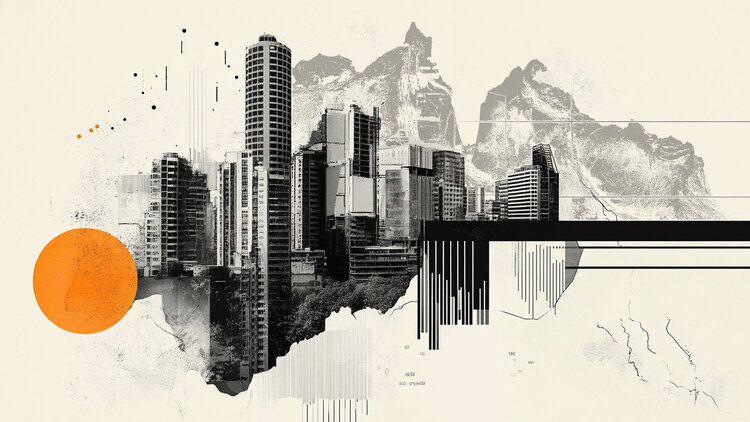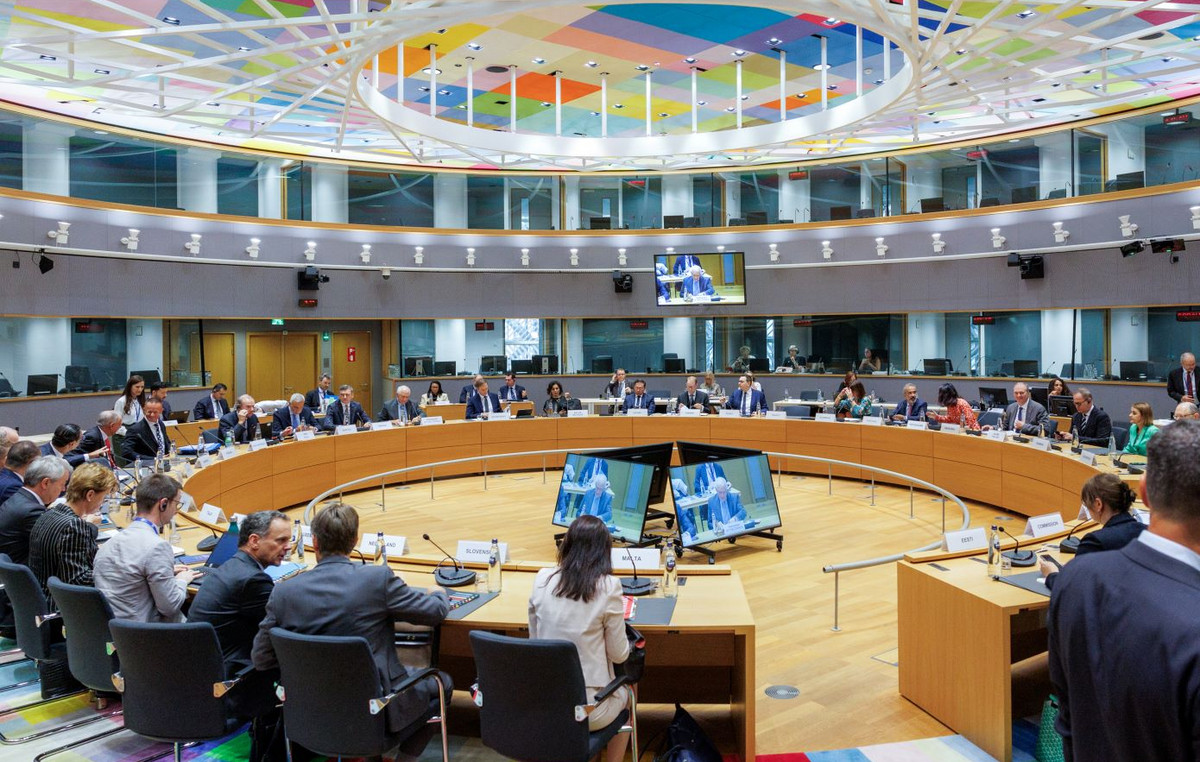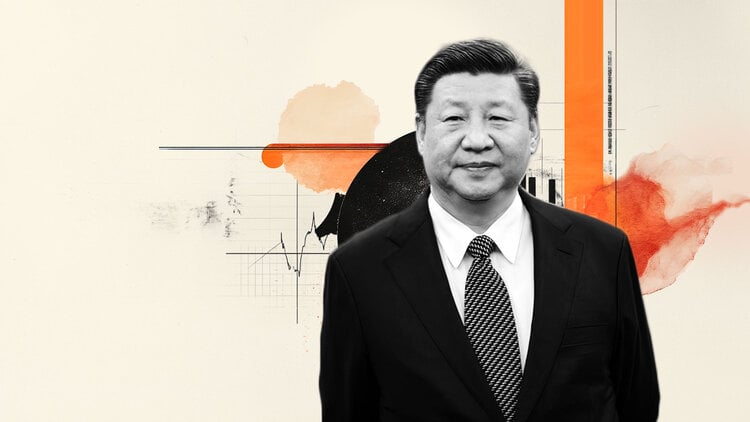False: It is false that the video in which a person records random ballot papers (BUs) with more votes registered for Jair Bolsonaro (PL) than for Lula (PT) is an indication of fraud in the calculation of the first round of the 2022 elections. The BUs are true and show that the current president received more votes than the PT, but only in the polls that printed those bulletins. The recording does not demonstrate that this should have been the general result of the investigation throughout Brazil. Furthermore, contrary to what the video says, the BUs are not from polling stations in Minas Gerais, but from Rio de Janeiro.
Investigated Content: In videoa person shows Ballot Boxes hanging on the wall and suggests fraud because the documents shown in the images present President Jair Bolsonaro (PL) with more votes than former President Luiz Inácio Lula da Silva (PT).
where it was published: Kwai.
Completion of Proof: There is no evidence of fraud in the first round of the 2022 elections in a video circulating on Kwai showing several Ballot Boxes (BUs) that point to more votes for the reelection candidate Jair Bolsonaro than for Luiz Inácio Lula da Silva. At the final result of the first round, the PT candidate received 48.43% of the valid votes, ahead of Bolsonaro, who registered 43.2%.
As the Regional Electoral Courts of Minas Gerais (TRE-MG) and Rio de Janeiro (TRE-RJ) reported to Comprova, as well as a specialist in electoral law, despite the fact that the documents shown in the images are true, the fact that Bolsonaro had received more votes than Lula in a particular ballot box or polling station cannot be interpreted as an indication of fraud in the elections.
It was not possible to identify the exact location of the recording. The video circulates with the indication that it was recorded in Minas Gerais, however, in at least two of the ballot boxes shown, in addition to the voting of the presidential candidates, it is possible to see the names of the candidates for governor and senator of Rio de Janeiro. Right at the beginning of the video, the author of the images says “look, the tapes are still here in the TREs”.

In contact with Comprova, TRE-MG stated that the images were not taken in the state. TRE-RJ confirmed that the Ballot Boxes shown in the video are true and correspond to the BUs issued in the state, but that it is not possible to identify the exact location of the recording.
Both the Minas Gerais and Rio de Janeiro TREs also explained that the electoral legislation provides for the availability of printed copies of BUs in conspicuous places at polling stations. The ballot boxes are not used for the official count of the TSE — which takes place through media files attached to the ballot boxes — but they are made available to parties and the general population who, from them, can check the official results released by the Court. . In these elections, the BUs were printed with a QR code, which could be scanned by voters through the app. Bulletin in Handfrom the TSE.
False for Comprova is all content invented or edited to change its original meaning and deliberately disseminated to spread a falsehood.
Scope of publication: Comprova investigates suspicious content about the presidential elections with greater reach on social networks. As of October 13, the post on Kwai had 120,000 views, 9,561 likes and 1,204 comments.
What the author of the publication says: Comprova contacted the profile that posted the video on Kwai, but there was no response until the publication of this check. The team also searched for profiles of the same person on other social networks, but found no results.
How do we check: We searched Google for reports about any case of electoral fraud in Minas Gerais and Rio de Janeiro. We also check on the websites of electoral justice It’s from Superior Electoral Court (TSE) whether there were publications about disinformation regarding the content under analysis.
Next, Comprova analyzed all the bulletins that were recorded in the video and contacted the press offices of the TREs in Minas Gerais and Rio de Janeiro. Electoral law expert Luciano Hanna was also contacted by the team.
Finally, Comprova tried to contact the profile of Kwai who published the video and looked for profiles of the same person on other social networks, with no response.
What the video ballot boxes show
The analyzed video shows a person walking through a corridor, where several copies of Ballots of Urna (BUs) with results obtained in the first round of the 2022 elections in the state of Rio de Janeiro are posted on the walls. As he walks down the aisle, the author of the video says he will “draw” the Ballots from the Urn to show on the recording. It records six BUs where you can see the vote received by each presidential candidate. In all of them, Bolsonaro received more votes than Lula.
The first BU appears at 46 seconds into the video. In it, it is possible to see that Ciro Gomes (PDT) had seven votes; Lula, 80 votes; Father Kelmon (PTB), one vote; Simone Tebet (MDB), 13 votes; Vera Lucia (PSTU), one vote; Jair Bolsonaro, 158 votes; Felipe D’Ávila (New), one vote; and Soraya Thronicke (União Brasil), two votes. According to the TSEcandidates who did not receive votes at the ballot box do not appear in the Bulletins.
In the second bulletin, with 1 minute and 5 seconds of video, the vote was: Ciro Gomes, five votes; Lula, 73 votes; Father Kelmon, one vote; Simone Tebet, 11 votes; Sofia Manzano (PCB), one vote; Jair Bolsonaro, 139 votes; Felipe D’Ávila, two votes; Soraya Thronicke, one vote; and Léo Péricles (UP), one vote.
In the third bulletin that appears in the video, the author first frames the excerpt from the document that shows the counting of votes for governor of Rio de Janeiro. Then, it records the total number of votes for senator and only after that, after 1 minute and 27 seconds, the counting of votes for president is shown: Ciro Gomes appears with six votes; Lula, 74 votes; Simone Tebet, 12 votes; Jair Bolsonaro, 179 votes; and Soraya Thronicke, one vote.
In the fourth bulletin recorded in the video (0:01:40), the results were: Ciro Gomes, ten votes; Lula, 88 votes; Simone Tebet, 14 votes; Jair Bolsonaro, 134 votes and Felipe D’Ávila, one vote. In the fifth BU (0:01:57), the record was nine votes for Ciro Gomes; 97 votes for Lula; two votes for Father Kelmon; six votes for Simone Tebet; and 184 votes for Jair Bolsonaro. Finally, the sixth bulletin recorded in the analyzed video (0:02:14) shows: Ciro Gomes, with seven votes; Lula, 86 votes; Simone Tebet, 11 votes; Jair Bolsonaro, 189 votes; Soraya Thronicke, four votes and Léo Péricles, one vote.
The Minas Gerais TRE, initially contacted by Comprova, reported that the fact that there is a discrepancy between the results of some bulletins and the total is not an indication of fraud. “The overall result of the election is defined from the total of all votes registered in all polling stations in the country and in electoral zones established abroad,” the Court said in a note to Comprova.
In contact with Comprova, the lawyer and specialist in electoral law Luciano Hanna, who was a member of the Regional Electoral Court of Goiás (TRE-GO), reinforces that the QR Code system of the Ballots of Urna serves to prove the origin of the document.
In the video, however, it is not possible to scan the QR Code of the bulletins shown, due to the framing and low quality of the images. The expert says that, in any case, showing ballot papers at a polling place with a result that differs from the total number of votes across the country does not prove wrongdoing. “The encryptions and security system do not allow fraud at any time,” says Hanna.
What are ballot papers
After voting has closed, the electronic voting machines print up to five copies of Ballot Boxes, which indicate all votes registered in that equipment on election day. According to the TSEall Ballot Boxes must show the date of the election, identify the municipality, zone and polling station in which they were issued and show the date and time of closing of the vote, the identification code of the electronic voting machine that printed it, the number of eligible female voters and voters, the number of female voters and voters who turned up to vote and how many could not be identified by biometrics.
All copies of printed BUs have a QR Code, which can be scanned with a cell phone camera by any voter through the official TSE app Bulletin in Hand. By reading this code, it is possible to confirm the authenticity of the bulletin.
The official counting of votes by the TSE, however, is not based on the ballot boxes, but by reading the media files that count the results directly from the electronic voting machines. THE result media it is a kind of pen-drive attached to every ballot box and which has a series of electronic security locks to ensure that only programs developed by the Electoral Justice itself can identify and read the files with the results of the vote. Thus, the Ballots of the Ballot box work as a way to check and compare the results that are provided to the TSE through the media files of the ballot boxes.
In recent check on the topicComprova showed that, of the five copies of the BUs that are printed, two are sent to the Electoral Office responsible for the section, one copy is posted in the room of the section where the voting took place and the other two copies can be delivered to the inspectors of the parties that accompanying the investigation, to the press or to the Public Ministry. The more than 472 thousand printed ballot papers after the first round of this year’s elections can be consulted on the TSE website or through the Court’s official election results app.
As informed to Comprova by the TREs of Minas Gerais and Rio de Janeiro, the disposition of the BUs printed in the electoral section is in accordance with the electoral legislation, as provided for in the Article 107 of TSE Resolution 23,669. The text says that “at the end of the work, the president of the polling station and of the justifications receiving table will post a copy of the Ballot Box (BU) in a visible place in the section”.
why do we investigate: Comprova investigates suspicious content that went viral on social media about the pandemic, public policies of the federal government and the presidential elections. Shortly after the first round of the last presidential elections, several posts have made false insinuations about fraud in the counting of votes, a position that has also been propagated by President Jair Bolsonaro himself on other occasions. False, misleading or out-of-context content about vote counting can create unfounded suspicions about the electoral system, harming Brazilian elections, institutions and democracy.
Other checks on the topic: The fact-checking agency Aos Fatos also investigated Ballot boxes shown on video are not from MG and do not prove fraud. Recently, Comprova demonstrated that it was false the video that claimed that a ballot box from an electoral section in Curitiba would not have been counted in the TSE calculation and that the total number of votes for each 12% of the polls counted in the first round also is not a sign of fraud.
Investigated by: Piauí, CNN Brasil, O Popular and Plural Curitiba; Verified by: Uol, Folha de S.Paulo, Metrópoles, A Gazeta, Estado de Minas, O Dia, Alma Preta and Estado de S.Paulo
Source: CNN Brasil







